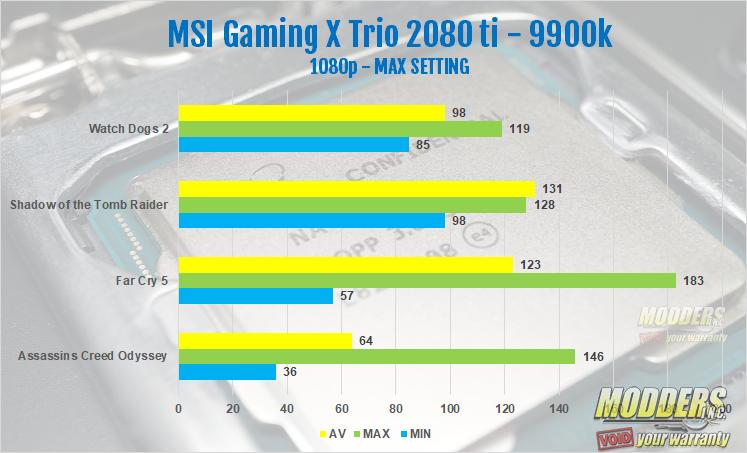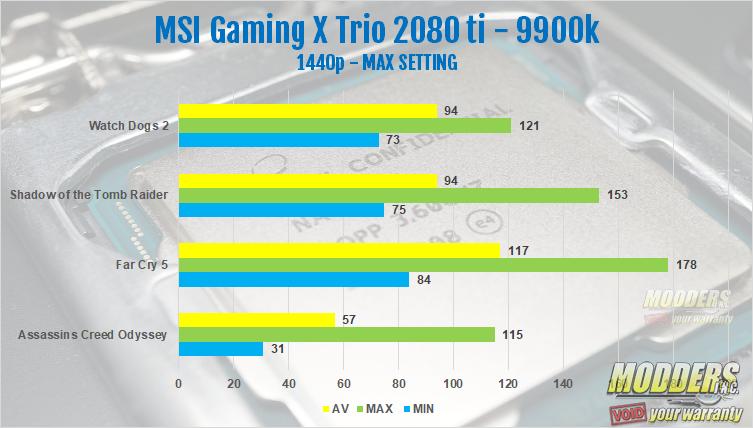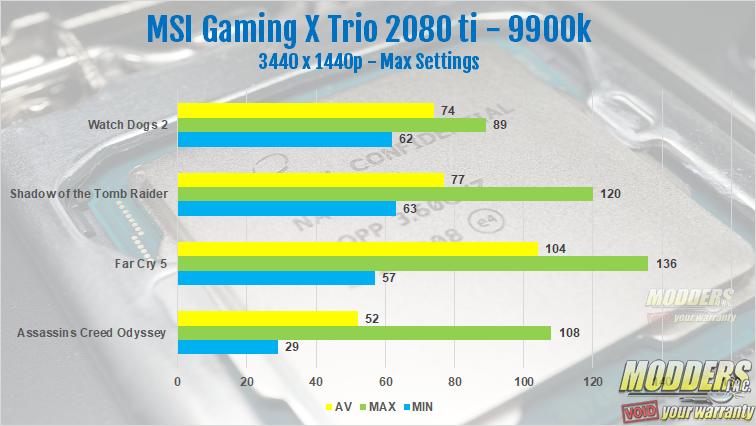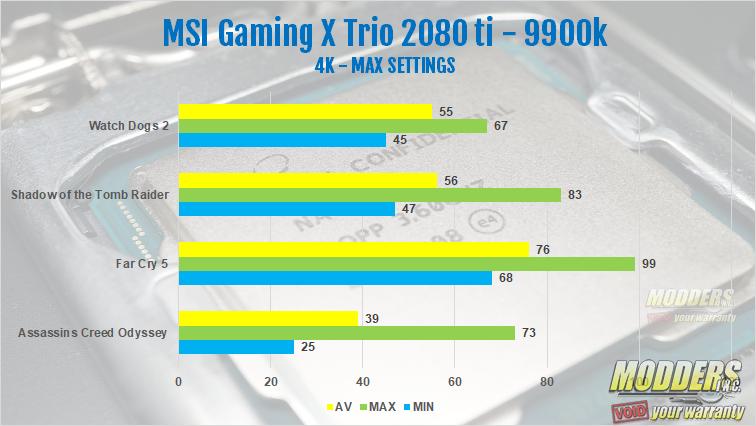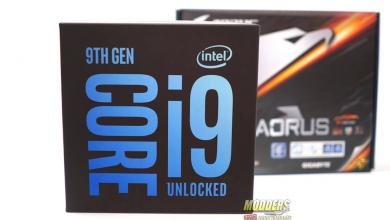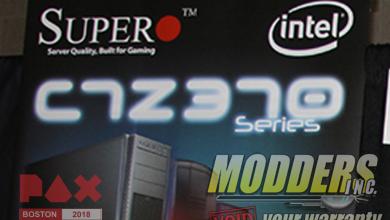Gaming and Synthetic Benchmarks
For gaming benchmarks, we used some of the newer games in our suite. This included Assassin’s Creed Odyssey, Far Cry 5, Shadow of the Tomb Raider and the oldest game tested was Watch Dogs 2. Each game was tested in 1920 x 1080, 2560 x 1440, 3440 x 1440 and 3840 x 2160. We didn’t use in game benchmarks, even though three of the four have them. I prefer benchmarking in game. I feel it gives a more accurate representation of the games real world performance. Each benchmark was run for 120 seconds and ran three times each. Then, the totals were averaged out to give the recorded result. For each benchmark run, I loaded the same game save to keep the results as fair and balanced as possible.
The first two charts show the results for both 1080p and 1440p results. As you can see, there is hardly a difference between the two charts. The major difference is the 1440p results , overall, all games ran at lower FPS than in 1080p. The only game that was even a little demanding on the MSI Gaming X 2080 ti was Assassins Creed Odyssey. This is not only the newest games I tested, but the most demanding as well.
Even looking at the 3440 x 1440 results, they were even worse that the previous results. It wasn’t until you hit 4k resolution that the games were demanding enough to put a real strain on the GPU and make it do some serious work. Far Cry 5 averaged 76 FPS maxed out in 4k with 4k textures enables. Next was Shadow of the Tom Raider with an average of 56 FPS, followed by Watch Dogs 2 with an average of 55 FPS. Last was my personal favorite game of 2018, Assassin’s Creed Odyssey. However, even with a monster of a card in the 2080 ti, Odyssey only managed to average 39 FPS in 4k running max settings. My main point her is if you are still playing in 1080p resolution, getting a 2080 ti would almost be a waste. Its far too powerful to mess with anything other than 4k gaming, or possible 3440 x 1440 at a high refresh rate such as 144 Hz.
